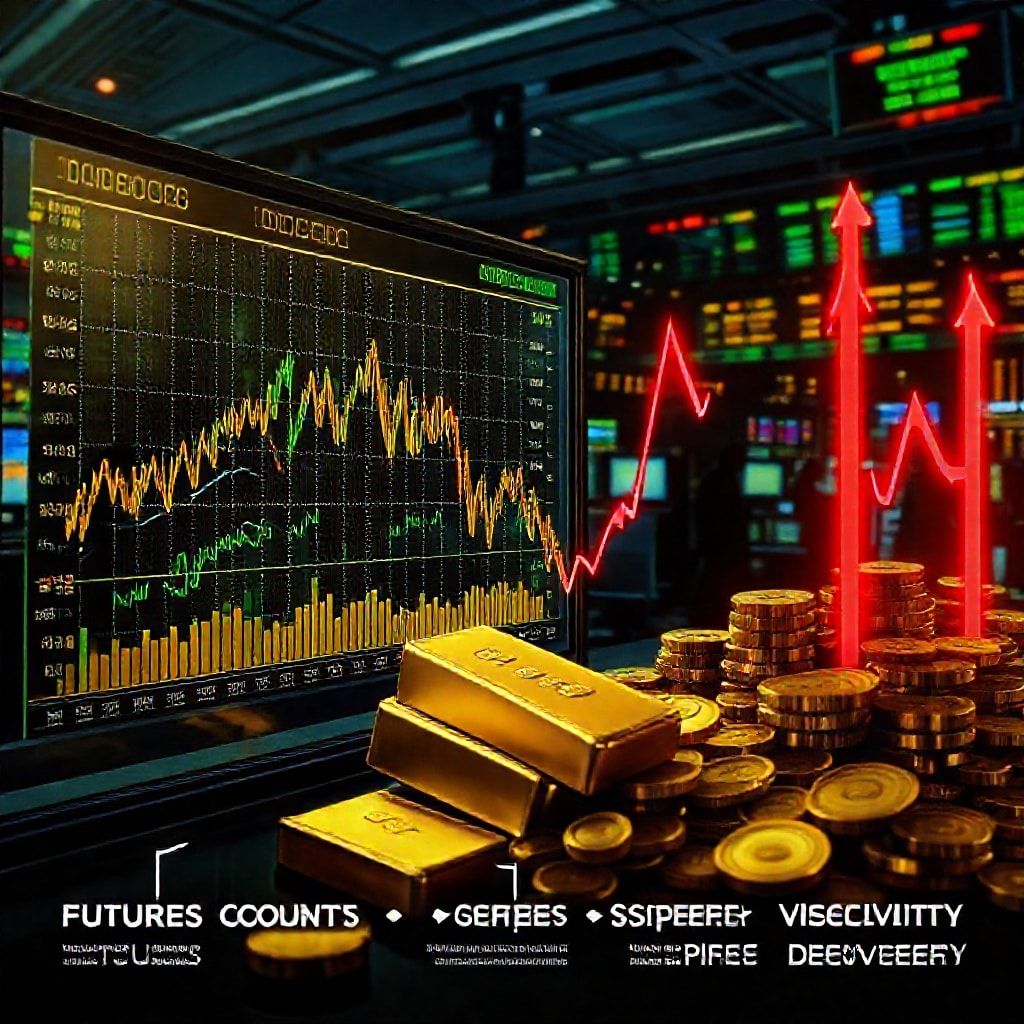How do futures trading and speculators influence gold price volatility?
How futures trading and speculators influence gold price volatility
Introduction
Walk into a busy trading room or scroll a chart while your coffee cools, and you’ll notice gold’s mood swings aren’t just about gold itself. Futures markets and the crowd of speculators push price moves as liquidity shifts, expectations flip, and risk appetite changes. The result is a gold market that can feel both steady and erratic in the same week—perfect fodder for traders who want to understand tempo as well as direction. This piece dives into how futures trading and speculators shape volatility, how that plays out across assets, and what tech-enabled traders should know as the web3 and smart-contract era expands.

What powers gold’s volatility in futures trading
- Price discovery through futures liquidity
Gold futures on major exchanges give market participants a way to express bets on future price levels. When open interest climbs and liquidity builds, prices tend to reflect broader information faster. But as new data hits—Fed statements, inflation prints, geopolitical headlines—rumors and momentum can amplify moves, making short windows of volatility more common.
- Speculators vs hedgers
Hedgers use futures to manage risk—protecting against price swings in real assets like jewelry, mining, or physical gold holdings. Speculators, drawn by leverage and potential quick profits, add volume and tilt sentiment. Their bets can drive sharp rallies or pullbacks, especially when crowded, and then unwind in a hurry if the tide shifts.
- Leverage and margin dynamics
Futures let traders control a large notional with a relatively small margin. That amplification is a double-edged sword: it can accelerate gains, but also magnify losses and trigger rapid liquidity changes. When leverage is crowded into a single move, even routine news can trigger outsized volatility spikes.
Real-world textures and scenarios
Think about a stretch when dollar strength strengthens or policy talks change tone. Gold often follows the dollar, but futures positioning can overshoot. In 2020–2022 bursts, you could see price swings that felt disproportionate to the day’s headlines as speculators chased momentum and then reversed course, with open interest telling part of the story. The result: periods when spot prices drifted on trend while futures markets whipsawed, guiding short-term traders to adjust stops and rethink exposure.
Web3 finance: a broader stage for diversified trading
- Cross-asset orchestration
Forex, stocks, crypto, indices, options, and commodities all share the stage. A smart trader watches correlations, liquidity cycles, and funding rates across venues to spot convergences or divergences that hint at where volatility might compress or explode.
- DeFi and perpetuals
Decentralized perpetual futures and tokenized gold streams offer near-real-time access and programmable risk controls. They also introduce new frictions—gas costs, smart-contract risk, and liquidity fragmentation—that traders must manage with care.
- Practical tips and cautions
If you’re juggling multiple markets, keep a disciplined position sizing plan, use diversified hedges, and rely on repeatable risk controls rather than chasing correlations that can reverse quickly.
Leverage, risk controls, and practical strategies
- Position sizing and guardrails
Limit exposure per trade to a small fraction of capital, and build in hard stop levels plus trailing stops to capture trend moves while protecting downside. Use a defined risk per trade rather than a gut feel.
- Tools for safety
Charting with volume and open-interest overlays, volatility indices, and scenario analyses helps you see whether a move is likely to be a one-off shake or a sustained trend. Combine this with smart order types and verified data feeds to reduce slippage.
- A simple framework for futures on gold
1) Identify the trigger: macro data, central-bank commentary, or a surprise in gold ETF flows. 2) Check positioning: are there crowded longs or shorts? 3) Decide on a risk budget and exit plan. 4) Factor in cross-asset signals (USD moves, real rates, inflation outlook). 5) Log the trade and review outcomes to refine your model.
DeFi challenges and future directions
- Challenges on the path to mainstream
Real-world adoption hinges on robust security, liquidity depth, and clear regulatory clarity. Front-running risks on some platforms, settlement delays, and insurance gaps are ongoing concerns that can affect perceived reliability.
- Smart contracts and AI-driven futures
Automated trading through smart contracts and AI-powered forecasting could tighten execution quality and speed. The upside is more precise risk control; the risk is over-reliance on models that can misread a black-swan event or regime shift.
Promotional, slogan-friendly notes for readers
- “Trade smarter, ride the volatility, own the edge in futures and beyond.”
- “Where futures meet real-time data, your Gold plan gains clarity.”
- “From spot to smart contracts: your diversified toolkit for the modern markets.”
Bottom line and outlook
Futures trading and speculative activity shape gold price volatility by shaping liquidity, sentiment, and risk taking. The web3 era broadens the playing field with new vehicles and cross-asset opportunities, but it also raises new risk management challenges. The smartest traders blend traditional discipline—clear risk control, measured leverage, consistent review—with sober use of new tech—DeFi tools, AI insights, and chart-based decision aids. If you want a concise creed: monitor open interest, respect risk, stay curious about how other markets move, and keep a plan you can actually execute when volatility spikes.